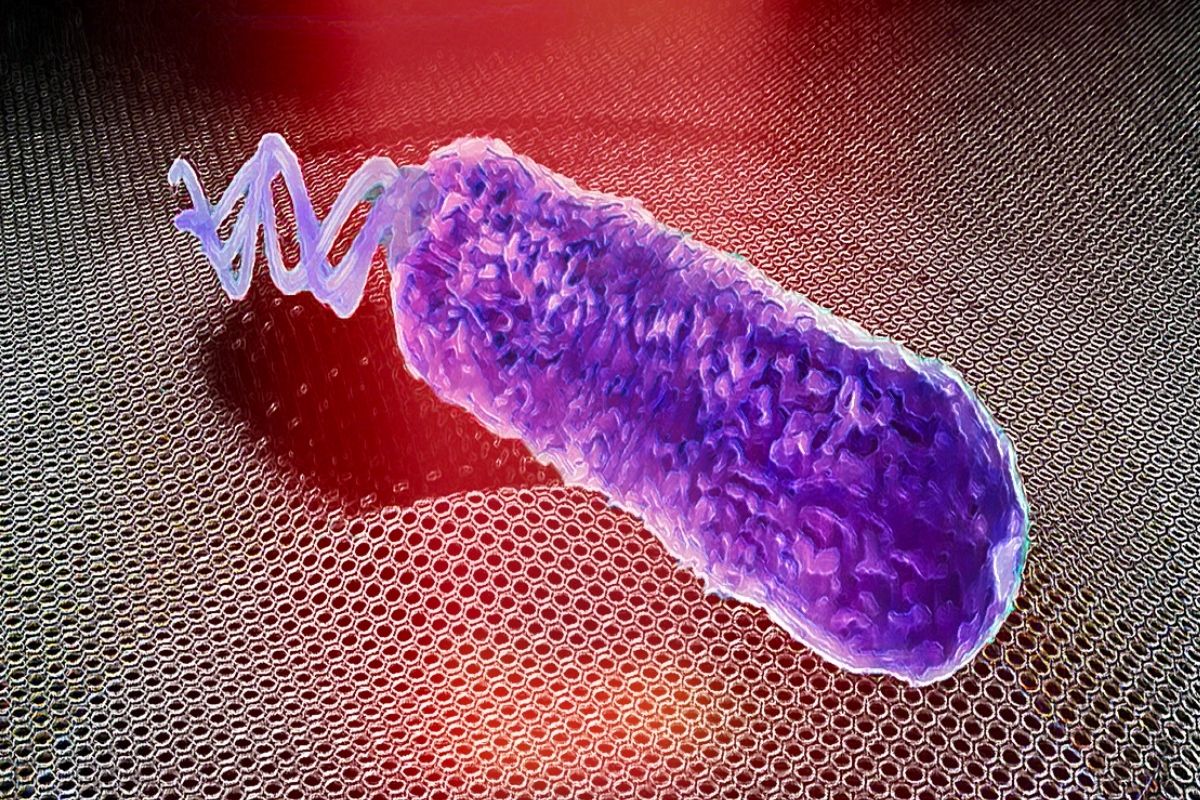
When you put bacteria on a graphene sheet, they turn out to give away a detectable drum solo. And that offers opportunities!
Imagine if you could hear bacteria. Then after a successful course of antibiotics it would become quite quiet. And if the cure doesn’t work, it would remain noisy. Unfortunately, bacteria do not reveal their possible resistance to antibiotics in that way; they are not troublemakers after all. Although; in the sheet Nature Nanotechnology Dutch researchers recently announced that they have succeeded in eavesdropping on a single bacterium.
How?
The researchers used graphene sheets for this. “Graphene is a form of carbon made up of a single layer of atoms and is known as the wonder material,” explains researcher Farbod Alijani. “It is very strong, with good electrical and mechanical properties, and it is also extremely sensitive to external forces.”
bacteria
The latter also became clear when researchers placed a bacterium on the graphene sheet. “When a single bacterium attaches itself to the graphene sheet (which actually acts as a kind of sensor), that sheet vibrates with amplitudes of a few nanometers,” Alijani tells. Scientias.nl† “And we can detect those vibrations using laser light.” “We could hear the sound of a single bacteria!” adds nanobiologist and co-author Cees Dekker.
flagella
According to Alijani, the vibrations, or the sound produced by the bacteria attached to the graphene sheet, are mainly caused by the flagella. These are tails on the cell surface with which the bacteria move. The flagella serve as a kind of drumsticks, whereby the graphene skin is actually the drum set. “To understand how small these flagellar blows on graphene are, you could say they are at least 10 billion times smaller than a boxer’s punch on a punching bag,” Alijani said. “Still, these nanoscale beats can be turned into soundtracks and listened to – and how cool is that?”
E. coli
In their experiments, the researchers worked with the well-known bacteria Escherichia coli (in short E. coli† †E. coli is the model bacterium for biophysical research and that is what we started with,” says Alijani. “But we have now expanded our experiments to include other bacteria, including Pseudomonas and Klebsiella.” The findings of those studies are – in contrast to the study with E. coli – not yet published.
It is easy to explain why the researchers are now also looking at other bacteria; the experiments with E. coli hint at an interesting application of graphene. For example, ‘the wonder material’ could possibly also be used in the fight against antibiotic resistance. Experiments have shown that the non-resistant bacteria that are treated with antibiotics on the graphene sheet quickly come to a standstill; the tremors subsided for one or two hours, only to disappear completely. It was very different for resistant bacteria on the graphene sheet when they were exposed to antibiotics; they continued to ‘drum’ at the same level. “The main application of our study is to develop a new generation of tests that can determine the sensitivity of bacterial infections to antibiotics,” said Alijani. “Current tests often take a lot of time (at least 24 to 48 hours and sometimes – depending on the generation time of the bacteria – even longer). Our technology shows that graphene can demonstrate the effectiveness of antibiotics in just 1 to 2 hours, reducing the time it takes to diagnose antibiotic resistance from days to hours.”
Source material:
†Eavesdropping on bacteria with graphene drumhead” – Tu Delft
Interview with Farbod Alijanic
Image at the top of this article: Irek Roslon / TU Delft